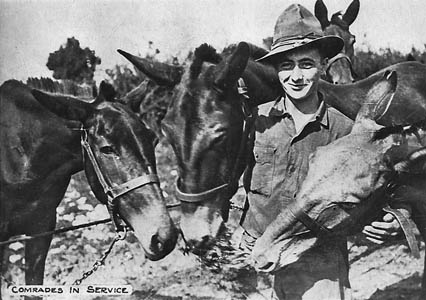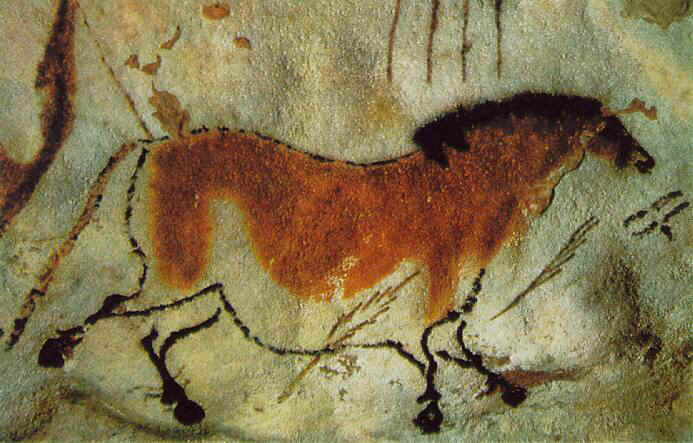Genetics and Horses

|

|
It all comes down to genetics. Genes are the legacy of a species and every individual has a unique set of them. When it comes to nature versus nurture, we tend to give nature or genetics less credit than it deserves. We are uncomfortable recognizing the importance of genetics because our 19th Century forebears had the Chauvinistic notion that some groups were constitutionally (or genetically) superior to others. This was used as a justification for racism and spawned major tragedies in the 20th Century. However, true science never really supported these actions in much the same way that true religion does not condone the violence that has been only too often committed in its name. A more balanced viewpoint is called for, and a lot of what a modern domestic horse is boils down to its genes and the prior selection of certain of those genes both by nature and by man.
Domestic horses (the species, Equus ferus caballus) have a total of 64 chromosomes arranged in 32 pairs. These chromosomes package sets of genes that govern various characteristics. One of these pairs, the X and Y chromosomes, govern the sex of the offspring. It is of note that a domestic dog has 78 chromosomes, the wild Prezwalski’s horse has 66, a donkey has 62, and a human has 46. Species with more chromosomes and those that reach sexual maturity earlier tend to be easier for man to breed for distinct characteristics. That is why there are so many widely different breeds of dogs.

|
Both human and horse genomes have been sequenced. The basic building block of the genetic code is a base pair of DNA nucleotides and the horse genome has a total of 2.7 billion base pairs. For those who have ever written a computer program, imagine writing one with 2.7 billion lines of instructions or reading a book with 2.7 billion letters in all its words. To give an example, the King James Version of the Bible contains 3,116,480 letters in all its words. The size of equine genetic code exceeds this by nearly 1000 times. This is just how complex genetic codes are. Both horses and humans are mammals and share many genes that do similar functions in both species. For example, both need to build muscle proteins, produce milk for their young or produce various hormones to name just a few and nature codes for these things using similar genes in each species. However, one species may have a given gene packaged in one spot on one particular chromosome while another species might have it in another. Studies comparing similarities in the ordering of certain genes on segments of chromosomes between man and horse (called conserved synteny) show they are about 50 per cent the same. However, the total set of individual genes present is 84% the same looking at the genes as individual actors, regardless of their place in the chromosomes (see page 102 July 2013 National Geographic Magazine).

|
Genetics also gives us insight into the domestication of the horse. It is possible to analyze certain genes on the Y-Chromosome inherited only from an animal’s sire and who, in turn, got it from his father and so on. In human populations these bear evidence to ancient migrations and intermixing of populations. These studies may have very surprising results. For example, studies of living relatives of Thomas Jefferson revealed a K2 Haplogroup pattern, which is commonly found in persons of a Middle Eastern background and extremely rare in people from the British Isles. Similar studies of DNA in male horses show that all domestic horses appear to descend from a single wild stallion. On the other hand, analysis of mitochondrial DNA (mtDNA), which all animals acquire only from their mothers, show that there were several different wild mares involved. This may be a testament to the unique problem of taming stallions as opposed to mares.
There are still large numbers of horses being bred in the United States. A lot of this breeding is driven by the Thoroughbred racing industry and is aimed at finding a winner. A successful sire is in demand and each year an elite population of stallions produces a crop of foals with an equally elite crop of dams. Unfortunately, a certain degree of inbreeding can result when a breeding population is too restricted. Certain animals should not be bred for the good of the species, but the desire for a winner may restrict the breeding pool too much and in time remove some of that genetic diversity which is critical in maintaining a genetically healthy population. The lineage of Thoroughbreds is known back for hundreds of years and my Thoroughbred horse’s lineage is much better documented than my own. I can trace him generation after generation back to the famous English racehorse Eclipse (1764-1789) and on back to the Darley Arabian (c. 1724-1754), one of the three foundation sires of the Thoroughbred breed of horse. However, I also notice that names like Discovery, Nasrullah, and Polymelus show up twice in his lineage. Nasrullah (1940-1959), for example, was recognized as leading the sire list five times in his career as a stud. He was grandsire to the well-known racehorses Secretariat and Ruffian. However, no horse should be overlooked. It is interesting that some of the leading sires were not themselves that successful in their own racing careers but had offspring who were consistently successful. Mr. Prospector (1970–1999), an ancestor of The Petite Bay, is a good example. My point is that a degree of inbreeding exists among purebred horses and that is not necessarily a good thing. Perhaps the best known situation resulting from inbreeding of horses was the lack of resistance to the equine herpes viral infection noted in Lipizzaners.
Before I have you writing letters to the editor of the Thoroughbred Times, I should say the following. It is likely that you too have instances of consanguinity in your own lineage that you do not know about. Humans lived in small agricultural villages with a very restricted pool of partners for centuries, and it is likely two distant cousins got together in your own lineage also. In addition, if you go back so many generations you reach a generation where the total number of ancestors exceeds the population of the earth at the time. There must be ancestors who are repeated in much the same way as in my beloved Thoroughbred. I assure you that he has one head, four legs and seems a perfectly normal (some would question if there is such a thing) Thoroughbred horse.
The Accidental Horseman